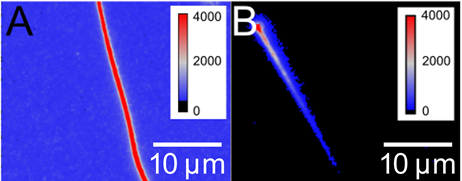
Photonics Seminar
Influence of morphology on the plasmonic properties of chemically synthesized silver nanowires: experimental and numerical studies
mgr Michał Ćwik
Instytut Chemii Fizycznej PAN
Oct. 27, 2022, 12:15 p.m.
ul. Pasteura 5, sala 1.03
Upon resonant light excitation, free electrons in metallic nanostructures can oscillate, inducing plasmons. When the dimensions of the nanostructures are smaller than the wavelength of the incident light, these oscillations result in local electric field enhancement. If we place a fluorescent molecule in the vicinity of such a nanostructure, increased fluorescence intensity can be observed due to enhanced electric field and interactions with plasmons. However, when one of the nanostructure dimensions is substantially expanded above the wavelength of the incident light, these oscillations are no longer confined in space and may propagate along the nanostructure as surface plasmon polaritons (SPP). This feature can be applied for plasmonic waveguiding of energy over macroscopic distances [1].
Herein, I develop a hydrothermal synthesis of long silver nanowires (lengths > 100 µm), which enables control of their diameters via the appropriate selection of a reducing agent. Utilizing wide-field fluorescence microscopy, I use the effect of metal enhanced fluorescence (MEF) of peridinin-chlorophyll protein (PCP) to elucidate the influence of AgNWs diameter and the excitation wavelength on the enhancement factors.
On the other hand, a home-built two-objective microscope with confocal excitation and wide-field detection is employed for quantifying SPP propagation in AgNWs coated with PCP protein. In particular, I focus on the impact of the AgNWs diameter on the damping efficiency of SPP. Numerical simulations accompanying these experiments provide a detailed understanding of the influence of the diameter on SPP damping. These include the determination of the SPP modes, which are excited in our experimental configuration [2].

Fluorescence intensity maps of: (A) fluorescence of PCP mixed with AgNWs, (B) SPP propagation in PCP-dressed AgNW.
[1] S. A. Maier, Plasmonics: Fundamentals and Applications (Springer, 2007)
[2] Michał Ćwik et al., "Controlling plasmon propagation and enhancement via reducing agent in wet chemistry synthesized silver nanowires," Opt. Express 29, 8834-8845 (2021)
